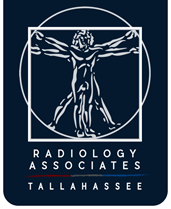Diagnostic Mammogram
Diagnostic mammography is used to evaluate a patient with abnormal clinical findings—such as a breast lump or nipple discharge—that have been found by the woman or her doctor. Diagnostic mammography may also be done after an abnormal screening mammogram in order to evaluate the area of concern on the screening exam.
Learn More About Diagnostic Mammogram
While a screening mammogram is encouraged each year for women who do not have significant breast symptoms, your doctor may order a diagnostic mammogram if you are experiencing a worrisome lump, changes in the breast skin, pain, nipple discharge, or if you have a personal history of breast cancer. Diagnostic mammography may also be performed if your screening mammogram demonstrates a possible abnormality. The type and number of mammographic views taken will be customized to your situation.
A diagnostic mammogram is not considered a preventive care service by most insurance companies. This exam may be subject to deductibles and co-insurance, so we suggest you contact your insurance provider with coverage questions. For more information on this and other radiology procedures, please visit www.radiologyinfo.org.
Do not use deodorants, body powders, perfumes or body lotions over your breasts or underarms the day of your procedure. You will be given a gown to wear during your exam. At that time, you will be asked to cleanse your breasts and underarm area so that it is free of any deodorants, body powders, perfumes or body lotions. Particles from those materials may mimic calcifications on the images, so this cleansing is extremely important for accurate imaging.
Your primary care physician will receive the results of your exam within 5-7 days of your visit. You may contact your physician for any information pertaining to the findings.
You will also be notified of the results by the mammography facility.
Follow-up examinations may be necessary. Your doctor will explain the exact reason why another exam is requested. Sometimes a follow-up exam is done because a potential abnormality needs further evaluation with additional views or a special imaging technique. A follow-up examination may also be necessary so that any change in a known abnormality can be monitored over time. Follow-up examinations are sometimes the best way to see if treatment is working or if a finding is stable or changed over time.
Your doctor needs to make your appointment for a diagnostic mammogram. He or she can call Women’s Imaging at 850-878-6104.
Please allow up to 1 hour for your exam. You are asked to not wear body powder or deodorant. Two-piece clothing is more convenient. To reduce tenderness, have a caffeine-free diet for several days before the exam.
A nationally certified female mammographer will position your breasts in the specially designed X-ray unit one at a time. This specially designed mammography equipment will include a platform for compression. This compression is a necessary action in any mammogram. Computer Aided Detection or CAD is commonly used with all diagnostic mammograms at this facility. This technology marks suspicious areas on the images and invites the radiologist to take a second look.
During your diagnostic mammogram appointment, the radiologist may decide it is necessary to perform a breast ultrasound in order to assess the characteristics of a lump. A breast ultrasound examination produces images of your breast using inaudible sound waves in a frequency range far above the range of human hearing. A hypoallergenic, water-soluble gel will then be applied to your breast to prevent air from getting between the ultrasound source and your skin. A small probe will be passed over the surface of your breast, producing a painless sensation of light pressure on your skin.
Approximately 10% of women are called back from screening mammograms for additional testing (also called a diagnostic mammogram). This percentage is slightly higher for women 40-49 years of age, but advances in technology – like digital mammography – have improved sensitivity in younger women. Most diagnostic mammograms conclude with normal results, but it is necessary in order to complete the mammographic evaluation and make an accurate diagnosis. In some cases a biopsy or follow-up test in 6 months may be advised.
Radiation dose
Strict guidelines ensure that mammogram equipment is safe and uses the lowest dose of radiation possible. Many people are concerned about the exposure to x-rays, but the level of radiation used in modern mammograms is very low and does not significantly increase the risk for breast cancer. And because of digital mammography advances, radiation dose is actually lower than traditional film mammography. The amount of radiation can be compared to an airplane flight of a few hours due to the thinner atmosphere.
